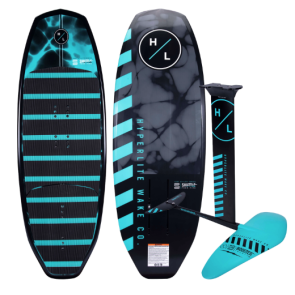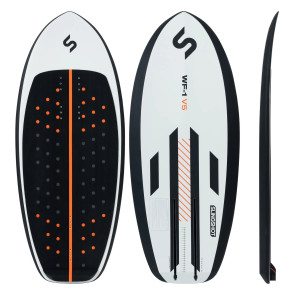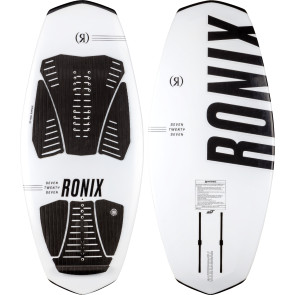-
MORGEN IN HUISIndien besteld voor 13.00 (Ma-Vr)
-
30 DAGEN RETOUR30 dagen retourbeleid
-
PRIJSGARANTIELaagste prijs garantie binnen de EU
Wakefoil Boards

-
Ronix Flyweight Pro MOD84 #2024 Wake Foil Board w/Shadow Carbon 29" Mast & Shadow Carbon Speed 1330 Wing Compleet Pakket
€ 2.849,90 -
Ronix Flyweight Pro MOD84 #2024 Wake Foil Board w/Shadow Carbon 29" Mast & Shadow Carbon Speed 1530 Wing Compleet Pakket
€ 2.849,90 -
Hyperlite Majik Karpet #2024 Wake Foil Board w/Alloy 28.5" Mast & MK 1200 Carbon Wing Compleet Pakket
€ 2.899,99
€ 2.699,90
-
Ronix Flyweight Pro MOD84 #2024 Wake Foil Board w/Alloy Fluid 24" Mast & Hybrid Carbon Balance 1300 Wing Compleet Pakket
€ 2.599,90 -
Ronix Flyweight Pro Mod84 #2024 Wake Foil Board w/Alloy Fluid 28" Mast & Hybrid Carbon Balance 1300 Wing Compleet Pakket
€ 2.599,90 -
Ronix Flyweight Pro MOD84 #2024 Wake Foil Board w/Alloy Fluid 28" Mast & Hybrid Carbon Balance 1600 Wing Compleet Pakket
€ 2.599,90 -
Ronix Koal Surface 727 #2024 Wake Foil Board w/Alloy Fluid 24" Mast & Hybrid Carbon Balance 1300 Wing Compleet Pakket
€ 2.349,90 -
Ronix Koal Surface 727 #2024 Wake Foil Board w/Alloy Fluid 28" Mast & Hybrid Carbon Balance 1300 Wing Compleet Pakket
€ 2.349,90 -
Ronix Koal Surface 727 #2024 Wake Foil Board w/Alloy Fluid 28" Mast & Hybrid Carbon Balance 1600 Wing Compleet Pakket
€ 2.349,90 -
Ronix Flyweight Pro MOD84 #2024 Wake Foil Board w/Alloy Fluid Shift 3 in 1 Mast & Hybrid Carbon Balance 1300 Wing Compleet Pakket
€ 2.149,90 -
Liquid Force Nebula 3'8'' #2024 Wake Foil Board w/Alloy 28" Mast & Horizon 1500 Wing Kompleet Pakket
€ 1.999,903'8'' -
Liquid Force Nebula 4'2'' #2024 Wake Foil Board w/Alloy 28" Mast & Horizon 1500 Wing Compleet Pakket
€ 1.999,904'2'' -
Hyperlite UTE #2024 Wake Foil Board w/Alloy 28.5" Mast #Commander 1328 Wing Compleet Pakket
€ 2.399,99
€ 1.999,90
-
Ronix Koal Surface 727 #2024 Wake Foil Board w/Alloy fluid Shift 3 in 1 Mast & Hybid Carbon Balance 1300 Wing Compleet Pakket
€ 1.919,90 -
Liquid Force POD 4'9'' #2024 Wake Foil Board w/Alloy 27" Mast & Flite 1200 Wing Compleet Pakket
€ 1.799,904'9'' -
Liquid Force POD 4'4'' #2024 Wake Foil Board w/Alloy 27" Mast & Flite 1200 Wing Compleet Pakket
€ 1.799,904'4'' -
Hyperlite Shuttle 4'5" #2024 Wake Foil Board w/Alloy 28" Mast & Booster 1300 Wing Compleet Pakket
€ 1.849,99
€ 1.799,90
-
Slingshot WF-1 3'11" #2024 Wake Foil Board w/Hover Glide Surf Foil Complete Package
€ 1.819,80
€ 1.639,90
-
Slingshot Puddle Pumper 3'3" #2024 Wakefoil Board w/Hover Glide Pump Foil Compleet Pakket
€ 1.739,80
€ 1.549,90
-
Slingshot WF-2 4'6" #2024 Wake Foil Board w/Slingshot Hover Glide Surf Foil Compleet Pakket
€ 1.619,98
€ 1.439,90
-
Slingshot WF-1 4'2" #2023 Wake Foil Board w/Hover Glide Surf Foil Kompleet Pakket
€ 1.719,98
€ 1.369,90
-
Liquid Force Launch 4'5'' #2024 Wake Foil Board w/Alloy 24" Mast & Launch 1200 Wing Kompleet Pakket
€ 1.099,904'5'' -
Hyperlite Wake Foil Majik Karpet #2024 Foil Board
€ 1.099,903'8"4'4" -
Slingshot WF-T Classic 4'5" #202# Wakefoil Board w/Hover Glide Surf Foil Complete Package
€ 1.399,00
€ 1.099,90
-
Slingshot Hover Glide WakeFoil WF-1 3.11 #2024 Foil Board
€ 919,903.11 -
Hyperlite Wake Foil UTE #2024 Foil Board
€ 899,904'5"5'0" -
Ronix Wake Foil Flyweight Pro MOD84 #2024 Foil Board
€ 899,903.94.2 -
Slingshot Hover Glide WakeFoil WF-2 4.6 #2024 Foil Board
€ 719,904.6 -
Slingshot Hover Glide Wake Foil WF-1 4.2 #2023 FoilBoard
€ 819,99
€ 649,90
4'2'' -
Ronix Wake Foil Koal Surface 727 #2024 Foil Board
€ 649,903.84.14.8 -
Hyperlite Wake Foil Shuttle 4.5 #2024 Foil Board
€ 549,904'5" -
Slingshot Hover Glide WakeFoil WF-T 4.5 #2024 Foil Board
€ 499,90 -
Slingshot Hover Glide WakeFoil Puddle Pumper 3.3 #2024 Foil Board
€ 419,903.3 -
Slingshot Hover Glide WakeFoil WF-T Classic 4.5 #202# Foil Board
€ 499,90
€ 379,90
4'5
Wake Foil Buying Guide
Buywake strives to bring you the best and most current guides, sizing help and gear tips to help you choose the right products and have the absolute best experience using it.
Buying a wake foil for the first time? Experienced rider looking for an upgrade? There’s a lot of information out there and it can be hard to know which wake foil or surf foil is right for you. Use our wake foil buying guide to learn about wake foil types, models and features and how they support your riding style and ability. There is a wake foil for everyone and we hope this guide helps you to find the right one.
We sell wake foil set ups from well known brands as Hyperlite, Takuma, Ride Engine and Slingshot.
What is Wake Foiling?
Wake foiling is a new watersport that brings so much fun and excitement for you, your friends and your family. The endless sensation of riding a wake foil about 70-80 centimeters above the water surface feels similar to the best powder day of your life on a snowboard or skis. It’s effortless, and the feeling can quickly make wake foiling the best part of any day out on the lake behind your boat which is filled with friends and family.
One of the finest parts about wake foiling is that you can do it in any water condition and behind any type of boat. The wake foils are designed to rise above the water at a certain speed (faster for wake foils, and a slower speed for the bigger surf foils) which makes it feel like you’re flying or floating above the water.
Today’s modern foils and wake foil boards are lighter, safer, smaller, and much easier to use than an air chair. Modern wake or surf foils are extremely efficient, and beginner wake foils can start to lift at speeds as low as 7 Km/h. Even the most new watersport enthusiast can quickly get up and play around with the right equipment. And we have the right equipment for you!
The History of Wake Foil Boards
Hydrofoiling comes from the early 60s where it was first invented in the form of a hydrofoil waterski. This design was patented by Bob Woodward – an aeronautical engineer. This early design started to develop over the years, and soon became a sit-down hydrofoil waterski.
Fast forward a couple of years, and Laird Hamilton started riding a modified Air Chair around Kauai’s north shore. He did this by taking the chair part off and strapping his feet down with a pair of snow boots. He was then towed around like a wakeboarder.
A group of big wave surf pioneers called “The Strapped Crew” then started charging big wave spots like Jaws with their new foil boards. Over time, people started to pay attention to this awesome new way of riding waves. Naturally, the quality and manufacturing of these boards also started to progress.
Largely thanks to the innovation and experimentation of Kai Lenny, hydrofoil surfboards developed into what they are today. As a result, a whole new watersport and approach to riding waves opened up.
What makes a Wake Foil work?
A wake foil is like an airplane wing that is submerged in the water. Think of the mast like a plane’s control stick. With different weight distribution and body position, you can control the pitch and roll of the foil, similar to a pilot steering a plane through the air.
Wake foil’s are designed for lift at relatively low speeds, with a medium top-end speed. This is the ideal combination for riding behind the boat. It’s stable and forgiving for beginners, but more experienced riders won’t outgrow it.
Wake foil’s relatively heavy construction is a good thing, as the added weight down low provides stability for the rider. Lighter carbon foils, on the other hand, are faster and higher performance, but are much more “twitchy”.
What are the components of a Wake Foil?
► The Wake Foil Board
In other board sports, the board is usually the most important because it typically connects the rider to the surface (Water, Snow, Concrete). In the case of wake foiling, the wake foil boards shape, construction, and style are slightly less important because the wake foil wing is going to be doing a lot of the heavy lifting (pun intended). You still want a wake foil board that’s going to perform how you want it. We recommend using a compression molded or foam-coated board if you are brand new to the sport, and getting something that’s fiberglass or more performance oriented if you are looking to quickly progress and make foiling a big part of your time on the water. Compression molded boards are heavier and they dampen more of the vibrations which can be a good thing when you are first learning how to foil. More advanced boards (carbon fiber and surf construction) weigh less and offer a more precise feel on the water.
►The Wake Foil Mast
The wake foil mast is the connection between your board and the foil. In general, beginner masts are shorter, and they are built to perform at slower speeds. Larger mast sizes are built for more advanced riders and higher speeds. The larger the mast size, the better it will handle choppy water because it allows the rider to stay on the foil without touching the board to the water.
► The Wake Foil Wing
This is where the magic happens. The foil is the part of the setup that actually causes the lift and because of this, it’s the most important piece when considering buying a hydrofoil. We categorize foils into two different groups: Wake and Surf. Wake foils are designed to work (lift) at higher speeds around the 12-15 Km/h range. Surf foils are designed to work (lift) at lower speeds of around 7–10 Kmh. Many surf specific foils start achieving lift at just 7 Km/h which can be less intimidating for beginners and help people to feel comfortable with the sensation of riding a foil.
► Reasons to Choose a Shorter Foil Board
The feeling you get from a shorter wake foil board depends on the board’s shape, but in general, shorter wake foil boards are slower and take more energy to push through the water. The more surface area the board has on the water, the faster it will move across the surface.
► Reasons to Choose a Longer Foil Board
Longer wake foil boards are typically easier to ride and learn on, they have a solid feel. Longer wake foil boards are heavier which means you work harder against the weight in the air, but you also get more control. That makes longer wake foil boards great for learning and the basics for the first time.
The difference between a Wake foil and a Surf Foil
► A Wake Surf Foil
Surf style foil’s are designed to be ridden at slower speeds and they are slightly less “twitchy” because of that. Surf style boards begin to foil around 7-10 Km/h. A wake surf foil mostly offers more wing surface.
► A Wake Style Foil
Wake style foil’s are designed to be ridden at slightly faster speeds than their surf style counterparts. Because of this, most wake style boards will start to foil at speeds of 12-15 Km/h and greater. A wake surf foil mostly offers less wing surface.
The difference between a Wake Mast and a Surf Mast
Wake Foil boards come with different masts depending on your skill or type of riding you are interested in: Surf or Wake. Beginner masts are typically shorter and perform better at low speeds
► Starter Wake Foil Masts - Most starter masts are between 50-60cm.
► Wake Foil Masts - Most wake masts are around 60 cm.
► Surf Foil Masts - Most surf masts are around 70cm.
The Wake Foil Maintenance
- Keep your wake foil out of the sun for long periods of time. Sun damages gear just like skin
- Always rinse your gear with fresh water after use in salt water
- Protect your investment with a bag for storage and transportation.
- Store your gear in a cool, dry location
Hydro wake foiling is one of the most exciting additions to wake surfing. This approach to riding high above the water surface provides a whole new experience and sensation on the water. If you are interested in trying out something new with wake surfing, then getting a wake foil board can be a great idea.
We hope that you get to try some of these boards out – because you will certainly become hooked on foiling when you do!
Call Our Experts: +31 682 940 930
Whatsapp Our Experts
Email Our Experts [email protected]








































 Contact us
Contact us


